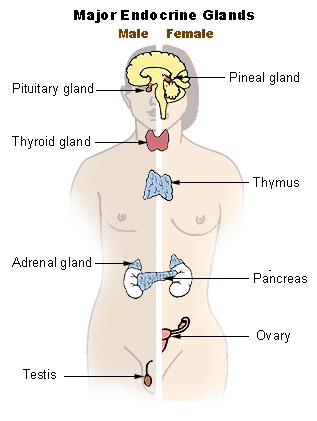endocrine glands

The endocrine glands are glands that manufacture one or more hormones and secrete them directly into the bloodstream. These hormones are then carried throughout the body where they influence only those cells that have receptor sites specific to them. Endocrine glands, unlike exocrine glands, do not have ducts along which their products are carried. The word endocrine is derived from the Greek terms "endo," meaning within, and "krine," meaning to separate or secrete.
Although there are eight major endocrine glands scattered throughout the body, they are still considered to be one system, the endocrine system because they have similar functions, similar mechanisms of influence, and many important interrelationships. The eight major endocrine glands are:
Some glands also have non-endocrine regions that have functions other than hormone secretion. For example, the pancreas has a major exocrine portion that secretes digestive enzymes and an endocrine portion that secretes hormones. The ovaries and testes secrete hormones and also produce the ova and sperm. Some organs, such as the stomach, intestines, and heart, produce hormones, but their primary function is not hormone secretion.


